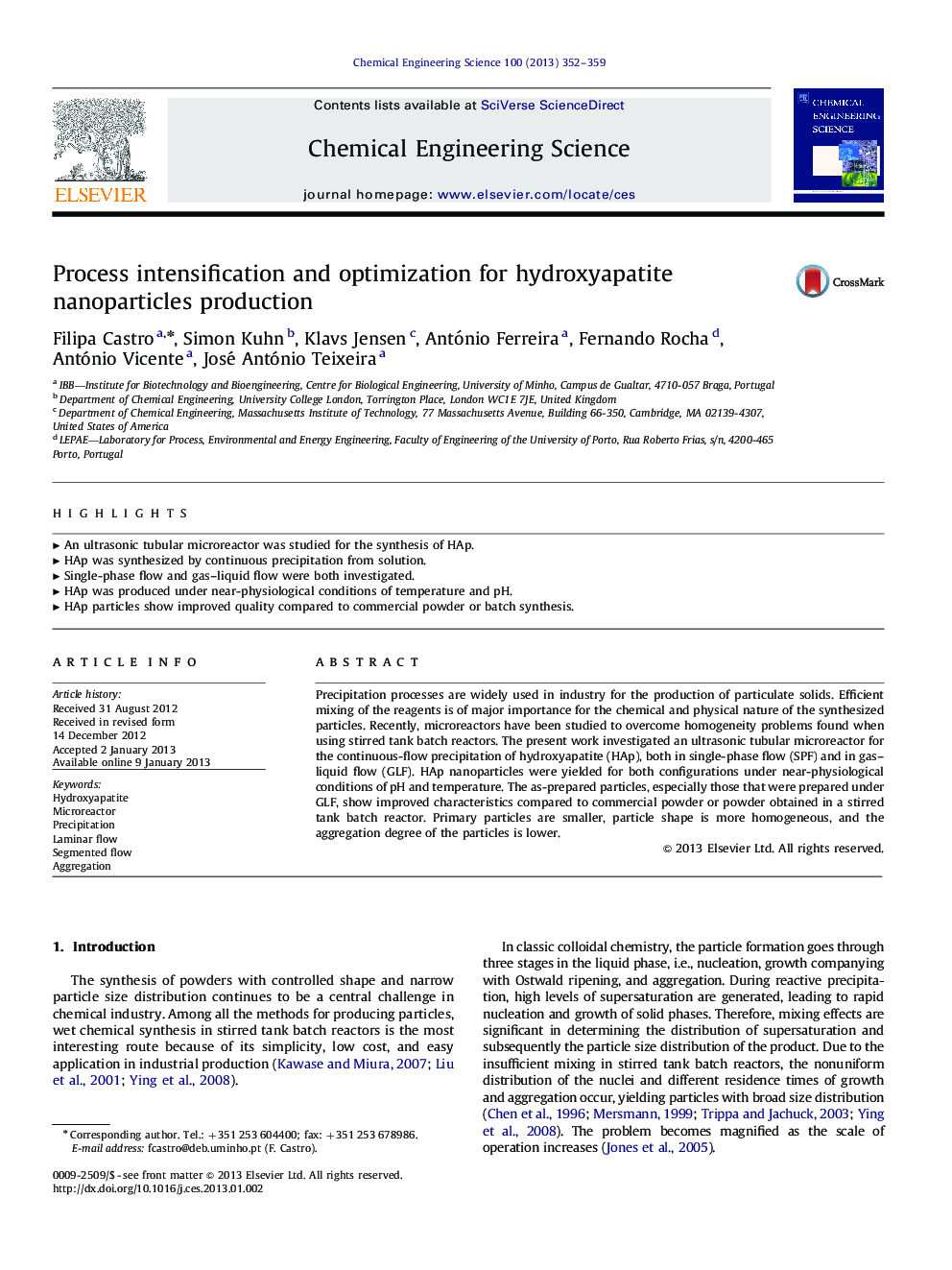| Article ID | Journal | Published Year | Pages | File Type |
|---|---|---|---|---|
| 155080 | Chemical Engineering Science | 2013 | 8 Pages |
Precipitation processes are widely used in industry for the production of particulate solids. Efficient mixing of the reagents is of major importance for the chemical and physical nature of the synthesized particles. Recently, microreactors have been studied to overcome homogeneity problems found when using stirred tank batch reactors. The present work investigated an ultrasonic tubular microreactor for the continuous-flow precipitation of hydroxyapatite (HAp), both in single-phase flow (SPF) and in gas–liquid flow (GLF). HAp nanoparticles were yielded for both configurations under near-physiological conditions of pH and temperature. The as-prepared particles, especially those that were prepared under GLF, show improved characteristics compared to commercial powder or powder obtained in a stirred tank batch reactor. Primary particles are smaller, particle shape is more homogeneous, and the aggregation degree of the particles is lower.
► An ultrasonic tubular microreactor was studied for the synthesis of HAp. ► HAp was synthesized by continuous precipitation from solution. ► Single-phase flow and gas–liquid flow were both investigated. ► HAp was produced under near-physiological conditions of temperature and pH. ► HAp particles show improved quality compared to commercial powder or batch synthesis.
